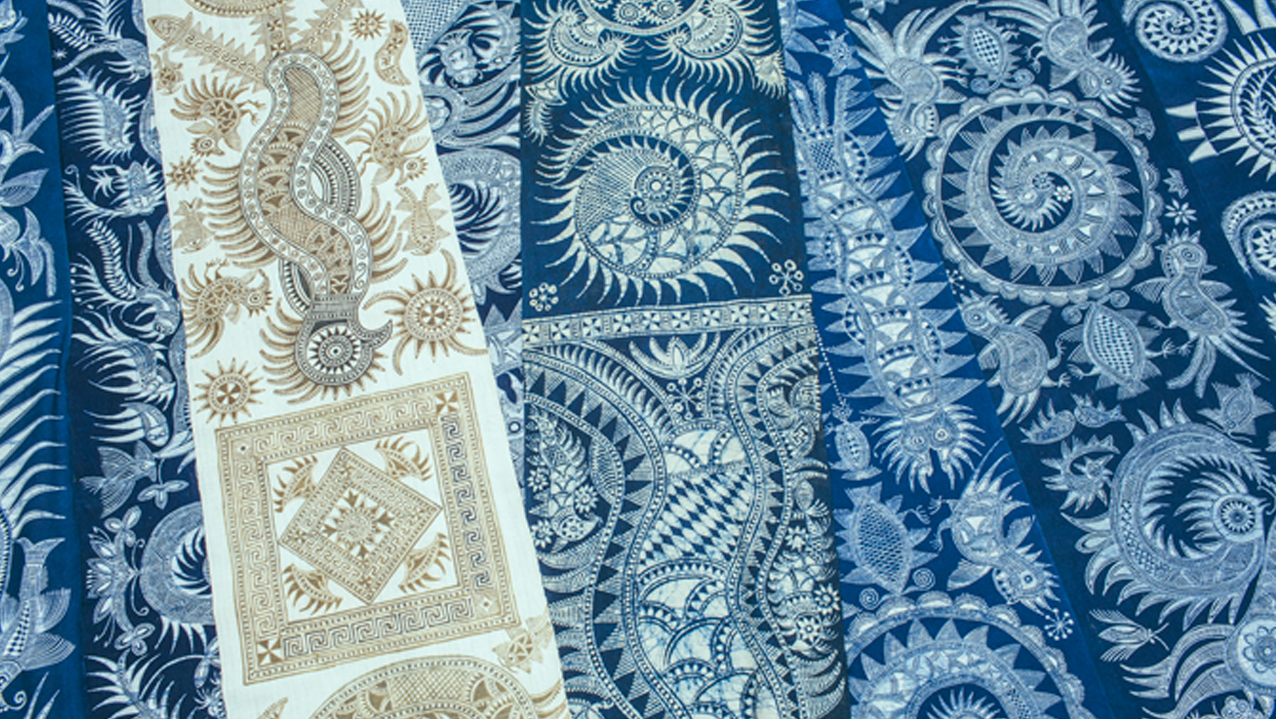The history of batik(bah-teek) a textile created using a resist process. or “wax dye” (la ran) in China extends back more than two thousand years. It began with agrarian societies around the central Yangzi(yahng dz) River region. Later, for several historical reasons, some ethnic groups, such as the Miao(meow), Yao, and Buyi, started migrating to the southwestern regions of China, like Guizhou(gway-joe), Sichuan(sih choo-ahn), and Yunnan provinces, bringing the batik technique with them.
The first step of batik production is the selection of cloth since its quality affects the colors. The patterns of intended ornaments are drawn with melted wax on a homespun cloth. After the batik artists finish drawing patterns, they wet the cloth with water and put it into indigoa deep reddish blue; a pigment traditionally obtained from plants. dye. They leave the cloth for twenty minutes in the dye, and then take it out for ten minutes to oxidizeto combine chemically with oxygen.. These steps should be repeated more than twenty times before the batik is done. After soaking the cloth, the artists remove it and put it into hot water. The wax that was used to draw the patterns floats up to the surface of the water. Artists then collect the wax so it can be reused. Finally, they wash the cloth with clean water and hang it to dry. After the cloth is dry, it can be used for different purposes, including making dresses for special occasions such as weddings.




